Client Brief
The project, built as a second home, sits on a 5000 sq. ft site, in a plotted layout on the outskirts of a small town, Kamshet. The client wanted a compact but functional place where they could avoid all the hustle-bustle of the city, which would be close to nature, and where they could host gatherings for their friends and extended family. Designers were involved in the process right from site selection. This site was selected because of its strategic location. It is on one corner of the layout, adjacent to which flows a stream which connects to the nearby river. Due to HFL, 9 m of open space had to be left as no development zone- this space was developed as green space. As the green zone abuts one side of the site, the other 3 sides have adjacent plots where buildings will come up in near future. Considering this, introvert planning is adopted, opening the house towards the stream. The client wanted a modern abode with updated amenities while staying firmly rooted in the traditional ethos. They had the image of a typical south Indian courtyard in mind which became the design narrative for the home.
Concept Note
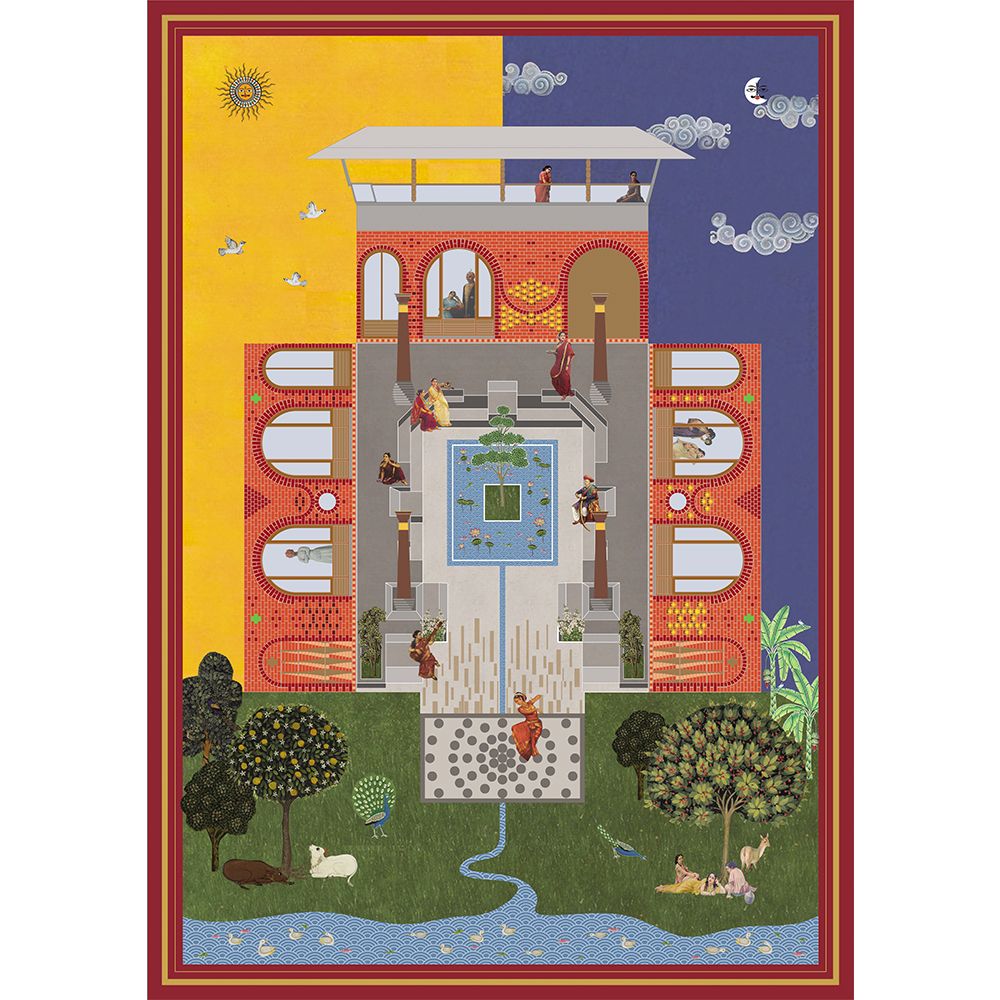
The house follows a typical traditional spatial planning system, where the courtyard is the central activity space. Considering the future development around the plot, we opted for introvert planning where all the spaces are spilling over into the courtyard. A waterbody is placed in the courtyard with a Bakul tree at the centre. The courtyard mimics the concept of a “Kund” (traditional stepped well). Various levels are created in steps, where built-in seats are also incorporated. A stage is also provided where small performances can be hosted. Due to the stage, the levels and the seats, the court becomes the most desirable space for all informal gatherings. The courtyard is flanked by exposed brick walls. More than 100 small niches are created within these walls. The space lights up at night when small lamps are placed in these niches and one can experience the relevance of the name “Deep Mahal”- A space to celebrate light!
The ground floor consists of a living, kitchen, dining, and 2 bedrooms, whereas the first floor houses a family cum hobby room and a pavilion overlooking the courtyard.
Focusing on the stream and the green zone, and paying a suitable homage to the sun, the orientation of the house is kept East-west. The south and west façades are most prone to rain- smaller openings are provided on these sides. These openings also help in catching the breeze from the windward side creating a venturi effect. The openings provided in the brick wall are placed in such a way that the landscape can be appreciated and interacted with from any corner of the intended building. The pavilion on the first floor gives an almost 360° view of the surrounding. Built-in seats are provided in the pavilion.
Design Process
The house is built in load bearing technique. The exterior wall which we can call the envelope of the building is a 10” thick stone and concrete composite wall where the stone can be seen from the outside and the smooth concrete surface from the inside. Considering the heavy rainfall in the area and the client’s wish for minimum maintenance, the stone was the natural choice for the exterior. The rugged exterior texture of the stone is countervailed with 9” thick exposed brick walls along the courtyard. The dining and veranda in the courtyard are covered with a 200 mm filler slab. The roof is constructed in a fabricated steel frame covered with cement fibre board and a waterproofing layer.
The material pallet consists of natural materials. The use of stone and exposed brick for the walls has left very less area to be plastered and painted. The brick walls are not directly exposed to the rains and display interesting geometric expressions in form of arches and circles, twists and corbels! Natural stones like Basalt, Shahabad, and Tandoor are used for flooring. Stone slabs are also used as partitions in toilets and the store. Recycled wood procured from the local scrap market is used for all the wooden requirements, like columns, windows, door panels and Furniture.
The house searches to express itself through simplicity. We had set our sights firmly towards crafting and curating spaces with a sustainable focus. The material palette and earthy textures reflect the modest lifestyle of the clients. The landscape complements the context. A conscious effort has been made to plant native species to boost the natural ecology and encourage the indigenous flora and fauna to flourish. We have tried to plan a home that blurs the boundaries between indoors and the outdoors. It reflects the timeless charm and tangible humility with traditional touches. Contemplating materials and space orientations has allowed this to become climate-responsive architecture.
Green Strategy
- The site was selected due to its strategic location. It is in the corner of a plotted layout where a natural stream passes by. Due to the stream HFL, 9 m no development zone has been created next to the plot where the plantation is done.
- A conscious effort has been made to plant native species to boost the natural ecology and encourage the indigenous flora and fauna to flourish.
- Introvert planning is done to maintain privacy considering the future development in the adjacent plots. The building is placed east-west and opens towards the stream to get a view of the water and farmlands beyond.
- Climate-responsive design choices have been made in form of a Sloping roof, a Central courtyard, Various types of openings, material selection etc.
- The exterior façade is made up of stone and concrete composite walls. Stone, having a high thermal mass, absorbs most of the heat from solar radiation and helps to bring down the temperatures in the interiors.
- Stone is procured from the local quarries. Decorative elements made up of stone are used to render the stone composite walls. These are crafted by the local artisans thus creating further job opportunities for them.
- Vertical stone slabs are used as partition walls for toilets, stores etc. Due to its negligible thickness lot of space is conserved and it has proven to be a durable and economical solution. Forgoing the artificial tiles, natural stone has been used in the flooring which accounts for less embodied energy.
- Recycled wood acquired from a local scrap dealer is used in columns, doors, windows and furniture like Beds, seating etc.
- With the use of materials like stone and exposed brick very less area is left for painting. This has reduced the use of Volatile organic compounds (VOC).
- Filler slab technology is adopted for the pavilion and family room slab. Circular moulds were made on-site with waste materials. These moulds were removed after the slab was cast thus giving an interesting profile to the slab from below. With this technique, we got a lightweight structure with a clean soffit eliminating the need for a false ceiling. The pockets created by filler moulds are also used as light fittings.
- Rainwater coming down from the part of the sloping roof is collected into a tray and passing through a sedimentary filter it is collected into a rainwater harvesting tank.
- The Central courtyard designed as a response to contextual traditional space planning helps in the circulation of air and light throughout the home. Strategic placement of windows as well as skylights make provision for ample natural light throughout the day.
- The entire structure is designed to be naturally ventilated. In the spaces flanking the courtyard, louvres are placed at the bottom and top so that fresh cool air enters from below and hot air escapes from the top. This ensures air circulation even if the windows are closed.
- Special Z-shaped MS openings are designed and provided on the south and west side wall for ventilation. The Z sections give ventilation without direct visibility thus providing privacy in the bathrooms and bedrooms
- Waterbody in the central court helps to bring down the temperature and creates a soothing and comfortable environment.
- Instead of using hardware those available in the market, many small hardware and details like door handles, pivots etc were designed and procured from the local craftsmen.
Gallery
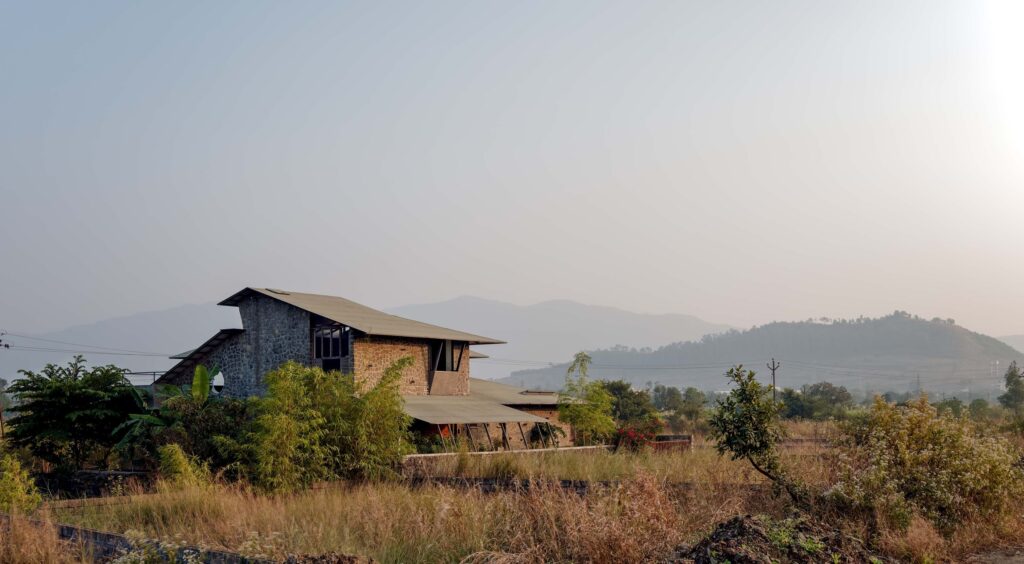

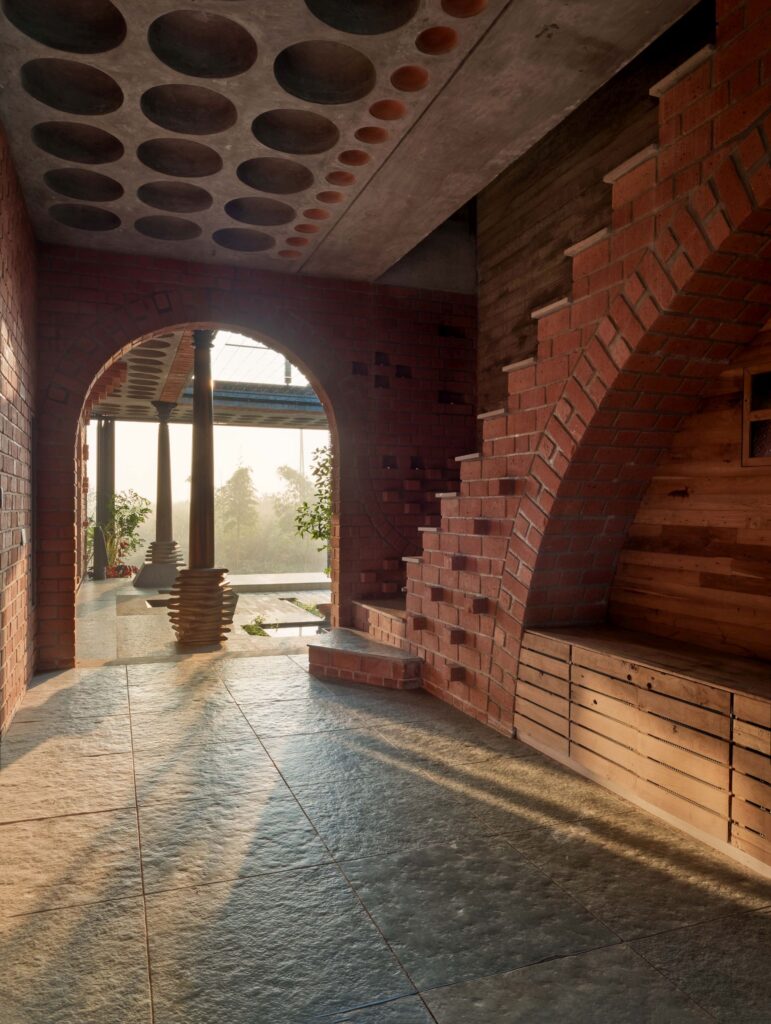

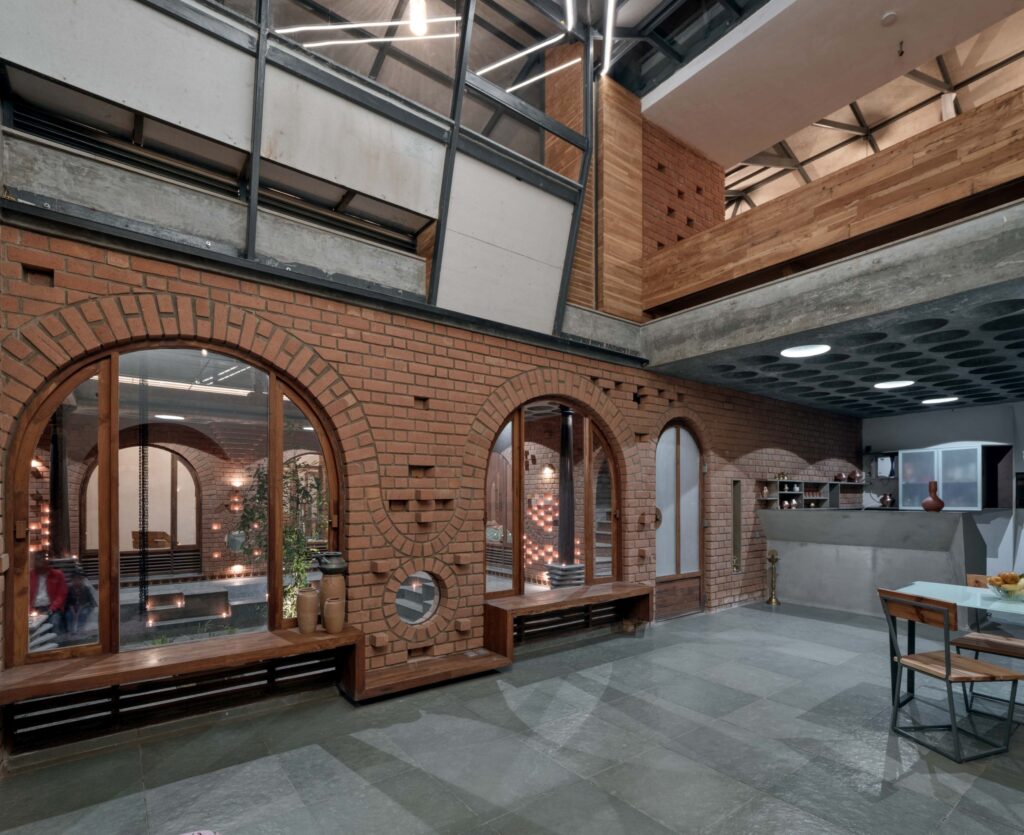

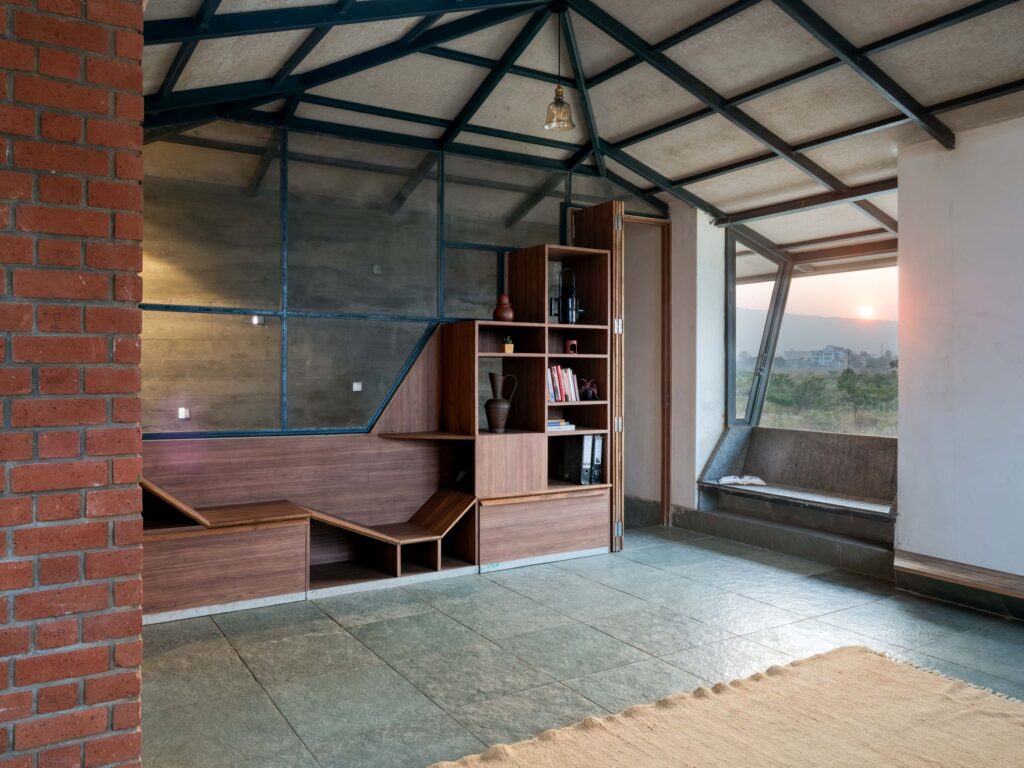
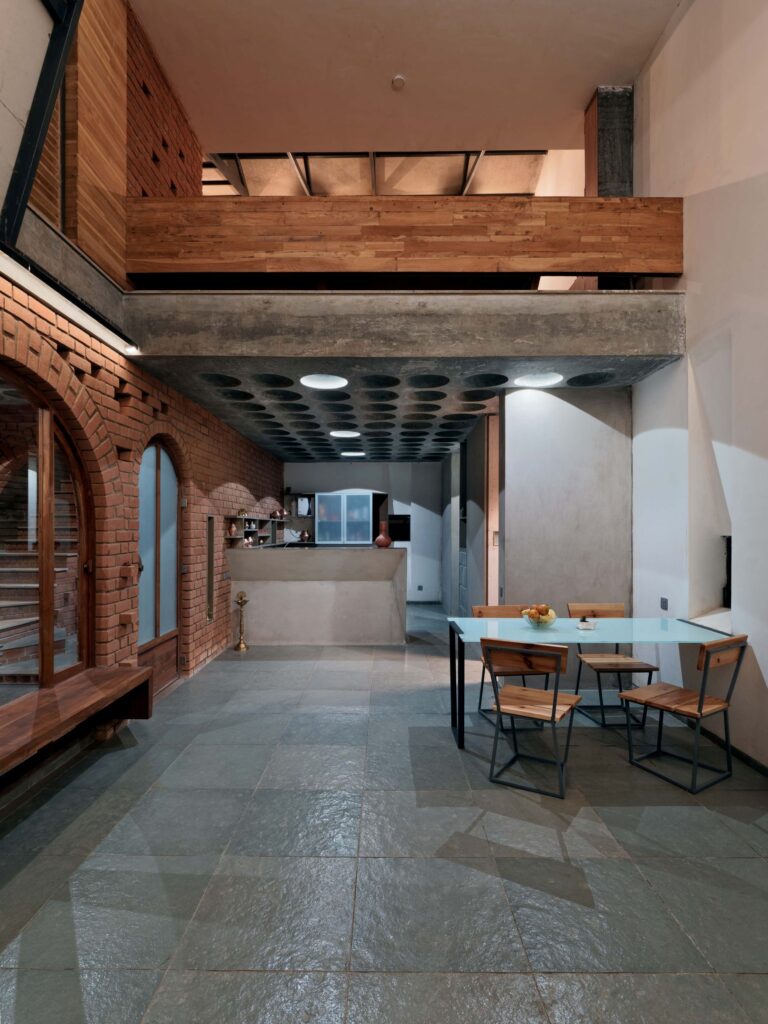



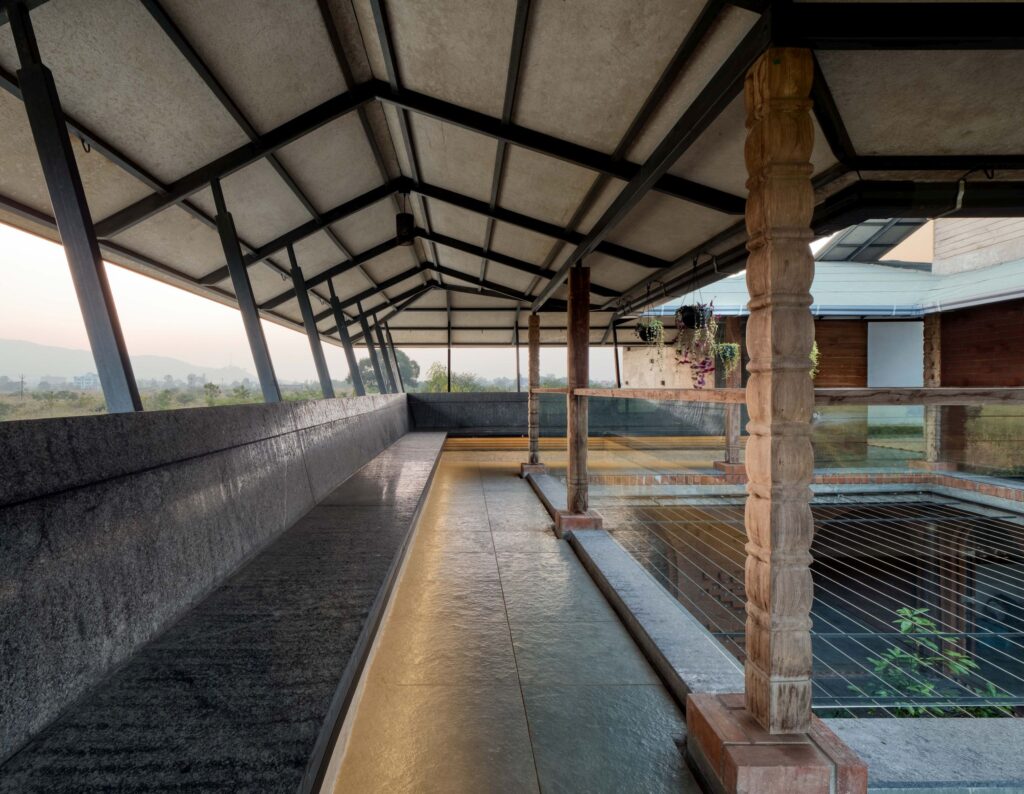
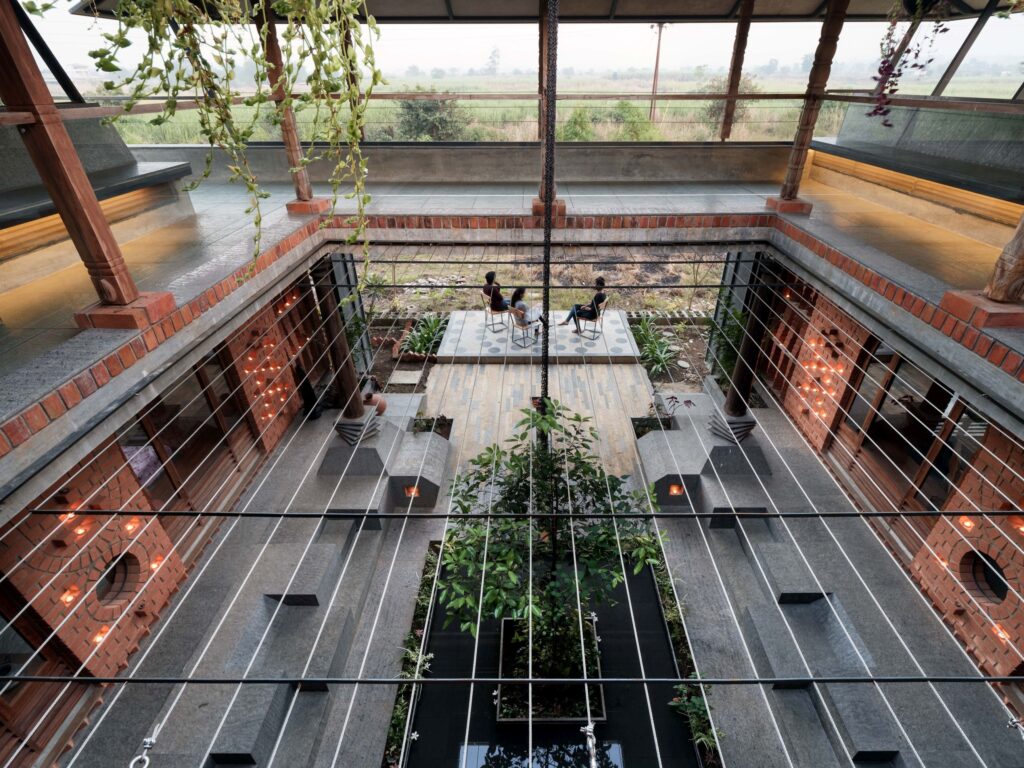

Drawings



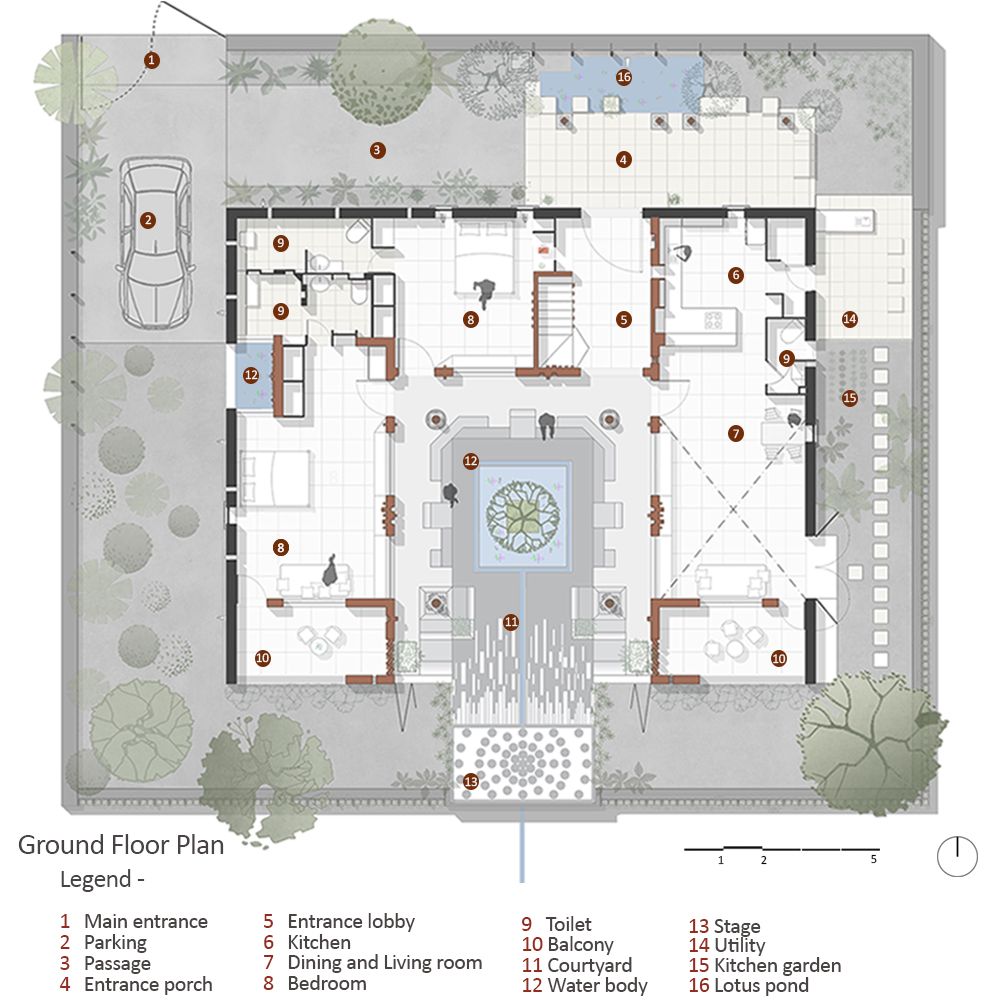

Project Facts
Project Type: Residential, Bungalow
Project Year: 2021
Location: Kamshet, India
Architects Name: Ar. Gaurav and Aishwarya Bhangre
Unique Materials Used: Stone and Brick
Photographer: Hemant Patil
Consultants: Vikrant Mate (Contractor)













